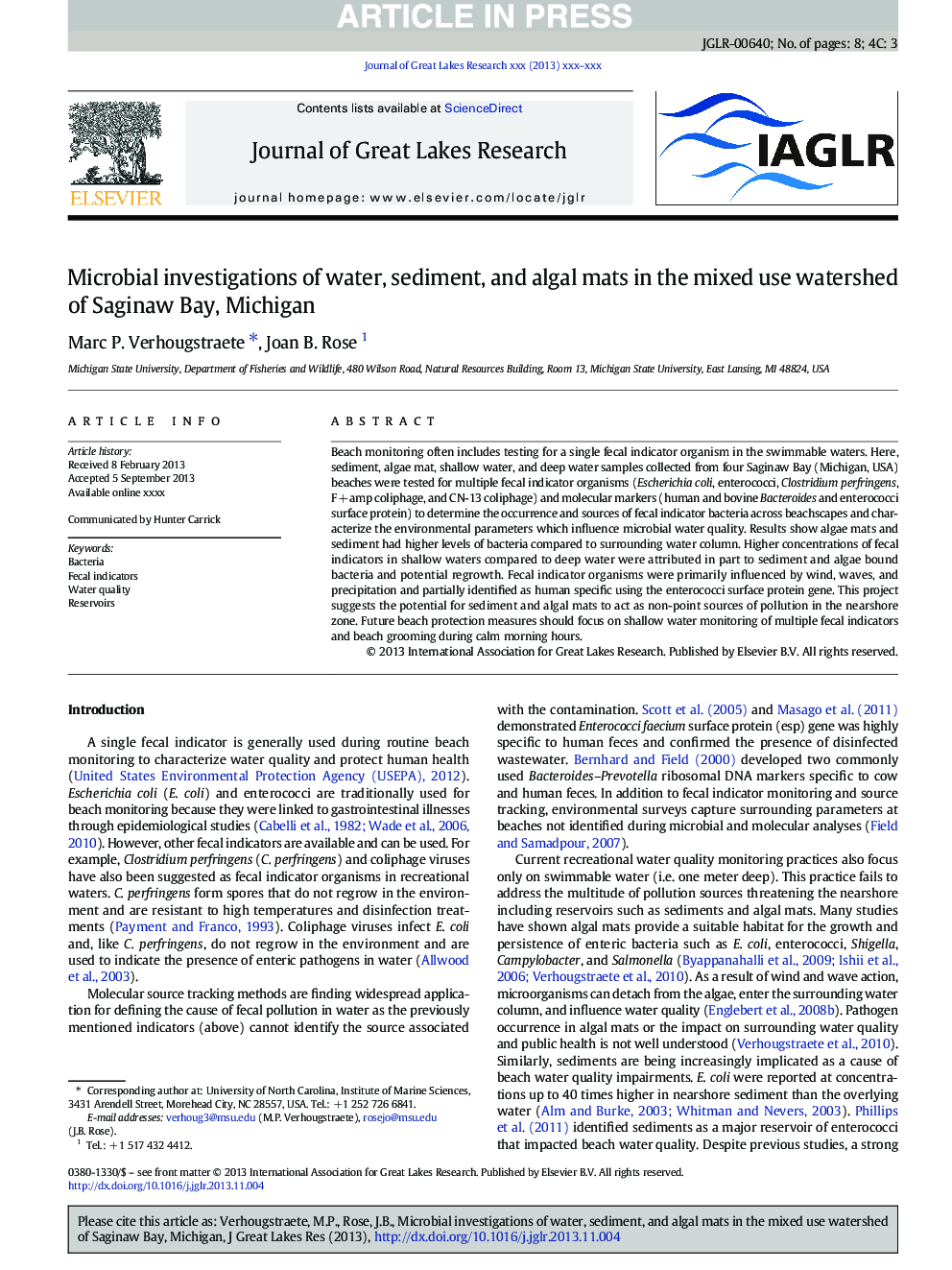| Article ID | Journal | Published Year | Pages | File Type |
|---|---|---|---|---|
| 4398383 | Journal of Great Lakes Research | 2014 | 8 Pages |
Abstract
Beach monitoring often includes testing for a single fecal indicator organism in the swimmable waters. Here, sediment, algae mat, shallow water, and deep water samples collected from four Saginaw Bay (Michigan, USA) beaches were tested for multiple fecal indicator organisms (Escherichia coli, enterococci, Clostridium perfringens, FÂ +Â amp coliphage, and CN-13 coliphage) and molecular markers (human and bovine Bacteroides and enterococci surface protein) to determine the occurrence and sources of fecal indicator bacteria across beachscapes and characterize the environmental parameters which influence microbial water quality. Results show algae mats and sediment had higher levels of bacteria compared to surrounding water column. Higher concentrations of fecal indicators in shallow waters compared to deep water were attributed in part to sediment and algae bound bacteria and potential regrowth. Fecal indicator organisms were primarily influenced by wind, waves, and precipitation and partially identified as human specific using the enterococci surface protein gene. This project suggests the potential for sediment and algal mats to act as non-point sources of pollution in the nearshore zone. Future beach protection measures should focus on shallow water monitoring of multiple fecal indicators and beach grooming during calm morning hours.
Related Topics
Physical Sciences and Engineering
Earth and Planetary Sciences
Earth and Planetary Sciences (General)
Authors
Marc P. Verhougstraete, Joan B. Rose,
